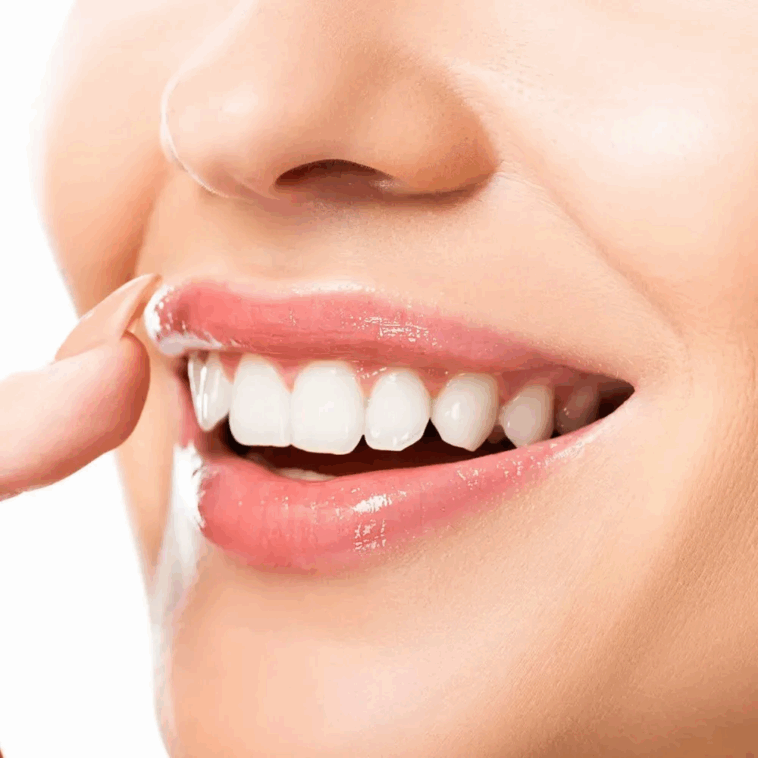If you have fillings or crowns and are considering teeth whitening, you might be wondering, “Can I whiten my teeth if I have fillings or crowns?” The short answer is that teeth whitening treatments primarily affect natural tooth enamel, not dental restorations like crowns or fillings. While Teeth Whitening can still improve your smile, understanding how it interacts with dental work is essential to avoid uneven results. Let’s explore what you need to know before using whitening treatments if you have dental restorations.
Whitening Teeth vs. Dental Restorations:
Teeth whitening products, whether they are strips, gels, or professional treatments, work by bleaching the natural enamel of your teeth. However, fillings and crowns are made from materials that do not respond to whitening agents in the same way natural enamel does. Here’s why:
-
Fillings and crowns are made from composite resin, porcelain, or other materials that do not absorb bleaching agents.
-
These materials will not lighten or change color with whitening treatments, leading to potential unevenness.
-
Whitening treatments affect only the natural enamel, meaning your dental restorations will stay the same color while your natural teeth lighten.
-
Color mismatch between your natural teeth and restorations can result in an uneven smile.
If you are considering whitening, it’s crucial to understand how it will affect your overall appearance, especially with existing dental work.
Can I Whiten Teeth With Fillings and Crowns?
While you can whiten your natural teeth if you have fillings or crowns, you may encounter some challenges in achieving a uniform result. Here’s what you need to consider:
-
Whitening will lighten only the natural teeth, so you may need to replace your fillings or crowns to match the new shade of your teeth after whitening.
-
Whitening works best when done before getting restorations, so your dentist can match the color of the restorations to your newly whitened teeth.
-
If you’re considering whitening after getting dental work, discuss the timing with your dentist to avoid having to replace crowns or fillings soon after the procedure.
-
Older crowns and fillings may change color over time, but whitening treatments will not make them blend with your newly whitened teeth.
In some cases, whitening your teeth can leave you needing a new restoration to match the color of your natural teeth after the treatment.
How Whitening Affects Different Types of Restorations?
Different types of dental restorations react differently to whitening treatments. Let’s look at the effect of whitening on common dental work:
-
Porcelain crowns: Porcelain is not porous, so it will not whiten with bleaching treatments.
-
Composite fillings: These materials are also resistant to whitening, so they may not match the brightness of your natural teeth if they are whitened.
-
Tooth-colored fillings: Similar to composite fillings, these will not respond to whitening agents, and the difference in color can become noticeable.
-
Older restorations: As dental materials age, they may darken, but whitening won’t make them lighter. You may need to replace them to restore a uniform look.
In cases where you have older or mismatched fillings and crowns, it’s best to consult your dentist about potential replacement after whitening.
Alternatives to Traditional Whitening for Those With Fillings or Crowns:
If you have fillings or crowns and are concerned about whitening, there are a few alternatives and solutions to consider:
-
Professional consultation: Always speak with your dentist before whitening. They may recommend specific treatments that are safe for your restorations.
-
Touch-up treatments: If your teeth are lightened but your restorations remain the same color, your dentist may be able to adjust them or create new ones to match your new smile.
-
Veneers: If whitening isn’t an option, porcelain veneers can provide a uniform, white appearance for teeth with both natural enamel and restorations.
-
Whitening toothpaste: While it won’t change the color of fillings or crowns, whitening toothpaste can help keep natural teeth clean and bright.
By exploring your options with your dentist, you can find a solution that helps you achieve your desired smile, even with existing dental work.
Maintaining Your Smile After Whitening:
Once you’ve Teeth Whitening treatment, you’ll want to maintain your results. Here are some tips to help you preserve a bright smile:
-
Regular dental check-ups: Regular cleanings help prevent new stains from forming and keep your natural teeth bright.
-
Avoid stain-causing foods and drinks like coffee, tea, and red wine, which can darken both natural teeth and older fillings.
-
Use whitening toothpaste: Maintain your smile with products that help to polish teeth and remove surface stains.
-
Consider touch-up treatments: For those with natural teeth and restorations, periodic whitening touch-ups may be necessary to keep your smile even.
-
Professional maintenance: Your dentist can help you with whitening options that complement your restorations and maintain a natural look.
With proper care, your whitened teeth can stay bright for a long time, but it’s important to stay on top of regular maintenance and consult your dentist about any necessary touch-ups or replacements.
Final Thoughts on Whitening with Fillings or Crowns:
So, can you whiten your teeth if you have fillings or crowns? Yes, you can whiten your natural teeth even with dental work, but you’ll need to consider how whitening will affect the appearance of your restorations. Fillings and crowns do not respond to whitening agents, which may cause a color mismatch. It’s often best to whiten your teeth before getting restorations or plan to replace them after whitening. Always consult with your dentist to discuss the best approach for achieving a uniform and bright smile.
This post was created with our nice and easy submission form. Create your post!



